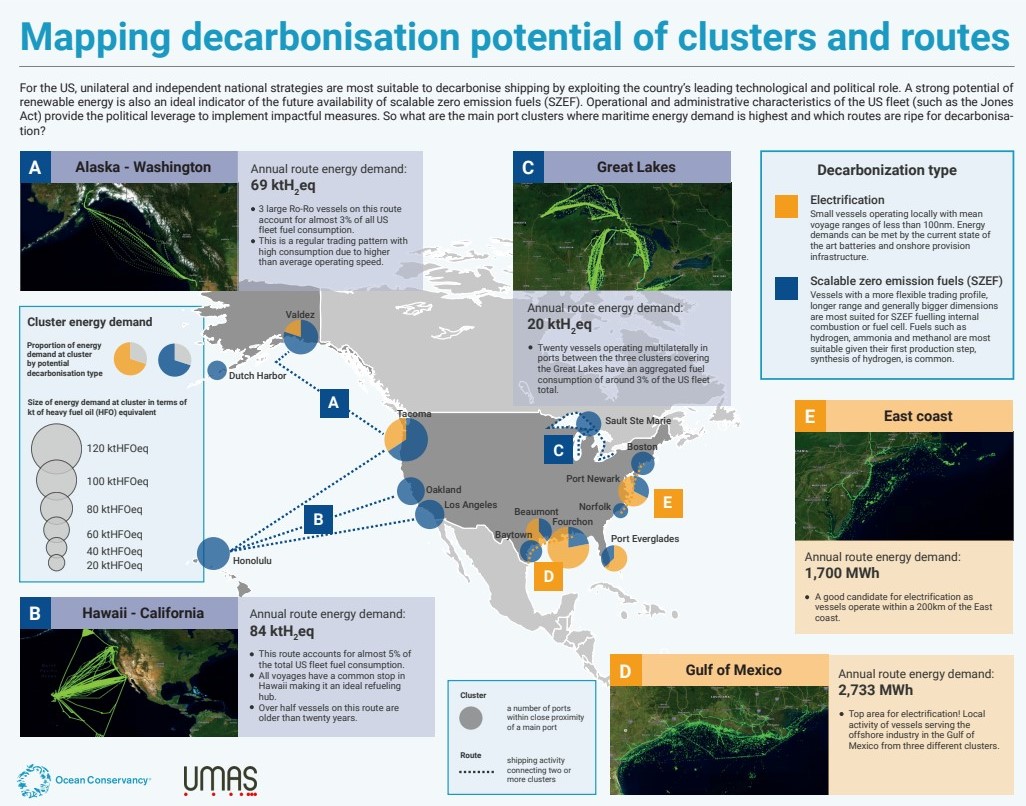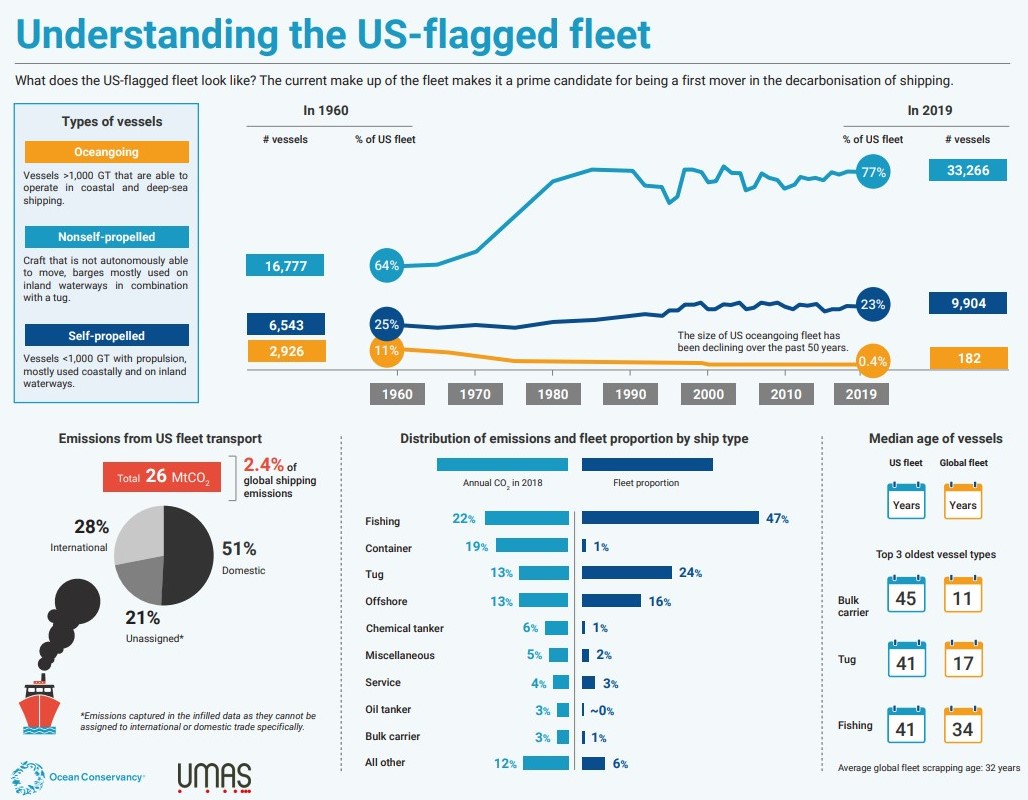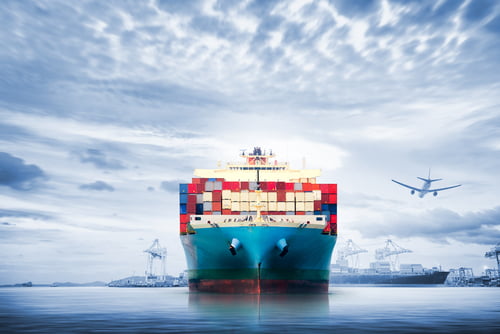More than 40% of the energy used by the U.S. shipping fleet could be replaced with zero emissions solutions this decade, giving the U.S. enormous potential to lead shipping’s decarbonisation, a new report by UMAS found.
The new report, commissioned by The Ocean Conservancy, titled “The Maritime Fleet of the USA – the current status and potential for the future” shows, for the first time, the scale of U.S. shipping fleet emissions and opportunities to decarbonise the sector.
Namely, in 2018, carbon emissions from all U.S.-flagged vessels amounted to around 26 million tonnes, approximately 2.4% of global shipping emissions. Domestic shipping voyages accounted for about 70% of carbon emissions from the U.S.-flagged shipping fleet, “which presents a unique opportunity for U.S. actions to effectively decarbonize the American maritime sector.”

More importantly, the report concluded that over 40% of the energy used by the U.S. fleet could be replaced with zero emissions solutions this decade. In fact, the report estimates that 17% of the current U.S. fleet’s energy demands can be substituted with electrification.
This would mean, for example, ships relying on battery electrification for shorter voyages or ships running off onshore electric power sources when in harbor
The Gulf of Mexico and northwest coasts of the U.S. are primed to move towards electrification given existing routes. A further 24% of the U.S. fleet’s energy demands, often comes from longer voyages than battery power alone can support, can be met with zero-emissions fuels such as green hydrogen.
[smlsubform prepend=”GET THE SAFETY4SEA IN YOUR INBOX!” showname=false emailtxt=”” emailholder=”Enter your email address” showsubmit=true submittxt=”Submit” jsthanks=false thankyou=”Thank you for subscribing to our mailing list”]
“These technologies are already available and adopting them would require minimal infrastructure updates and can happen within the existing renewal schedule and will not require needing to scrap and rebuild ships ahead of schedule,” says the report. The Pacific, Gulf of Mexico and Great Lakes are top candidates for the adoption of zero-emission fuels.
There is enormous potential for the U.S. to be a global leader in maritime decarbonization. This is due to 3 main factors: energy and technology expertise, lots of coastal and inland shipping activity and geographically favorable conditions
noted Dr Jean-Marc Bonello, Principal Consultant at UMAS, who then explained that the models show that this combination makes the U.S a prime candidate for developing domestic and international green corridors.

However, in order to meet climate targets set by the U.S. government, the sector must transition away from the use of fossil fuels and shift towards true zero-emission fuels. On the brightside, the U.S. is calling for the ambitious goal of 100% zero-carbon global shipping by 2050, with the report exploring ways to lead the way through actions that decarbonize the U.S. domestic fleet.
Through policies and investments that drive innovation in vessel propulsion systems, zero-emission fuels and infrastructure, the U.S. can strengthen domestic industry, create good jobs and accelerate the global shipping transition
stated Delaine McCullough, policy manager for Ocean Conservancy’s Shipping Emissions program.
Moreover, existing US regulations under the Jones Act provide the United States with an opportunity to drive decarbonization of domestic shipping and the adoption of zero-emission fuels and electrification.
According to the report, by already relying on US production, the domestic fleet can introduce new zero-carbon vessels as older vessels are decommissioned or retrofitted on already existing schedules.
Finally, by transitioning the domestic fleet away from fossil fuels, the U.S. can kickstart the international transition to zero emissions shipping. Eliminating carbon emissions from the shipping industry is essential if the U.S. and countries around the world are serious about meeting the goals of the Paris Agreement as well as their own domestic climate goals.






























































